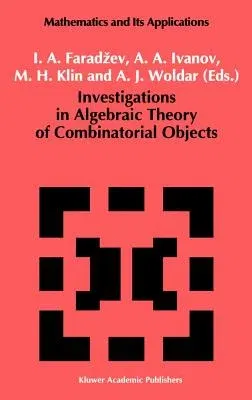Investigations in Algebraic Theory of Combinatorial Objects (1994)Hardcover - 1994, 30 November 1993

Qty
1
Turbo
Ships in 2 - 3 days
In Stock
Free Delivery
Cash on Delivery
15 Days
Free Returns
Secure Checkout

Part of Series
Mathematics and Its Applications
Part of Series
Archives Internationales D'Histoire Des Idees
Print Length
510 pages
Language
English
Publisher
Springer
Date Published
30 Nov 1993
ISBN-10
0792319273
ISBN-13
9780792319276
Description
Product Details
Book Edition:
1994
Book Format:
Hardcover
Country of Origin:
US
Date Published:
30 November 1993
Dimensions:
23.39 x
15.6 x
2.87 cm
ISBN-10:
0792319273
ISBN-13:
9780792319276
Language:
English
Location:
Dordrecht
Pages:
510
Publisher:
Weight:
911.72 gm